Steel Boat Repair 101.
26th - 28th March 2007

 The
first cut is the deepest.......
The
first cut is the deepest.......
It was a scary moment when Harry took his cutting torch to the hull. He cut out the bad section and then made a bigger hole, to give himself more light inside the hull. Finally he cut out the finished size of the area we wanted to replace, which was about three feet by four. We were left with a hole which gave easy access to the interior of the boat without climbing the ladder! As the old paint burnt off, the boat was filled with unpleasant, acrid smoke.



While Harry took his lunch break, Phil helped out by grinding off the rough edges and any rust spots from the surrounding area, ready for the new steel to be put in place. Harry's next task was to weld in place the new stringers, or lengthways supports which form the frame of the hull. Once they were secured in place he welded an eye onto the new piece of steel, which we could use to lift the steel into position, using the come-along. The new piece of steel was then held in position with the come-along inside the boat and several of the boat stands on the outside. It was important to put the steel in position before cutting it to shape to allow for the hull's curve.





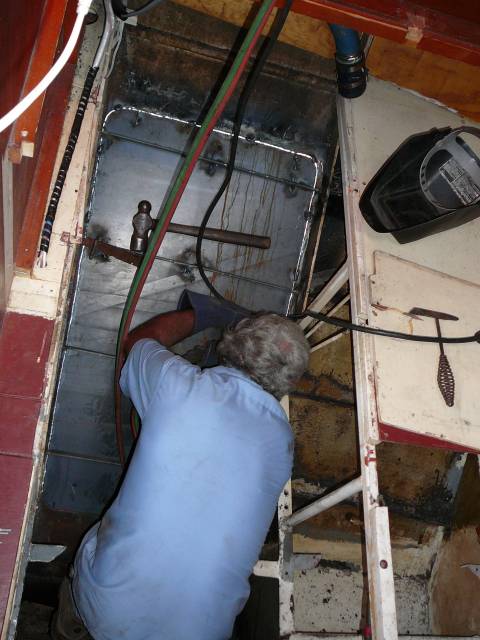
The next day Harry welded up the inside of the patch and Phil ground off the rough spots, meanwhile Harry ground and welded the outside. In only a day and a half, we were already applying epoxy primer to the new steel. Two coats of epoxy primer were followed on the inside of the hull with a coat of chlorinated rubber paint and a top coat of bilge paint.
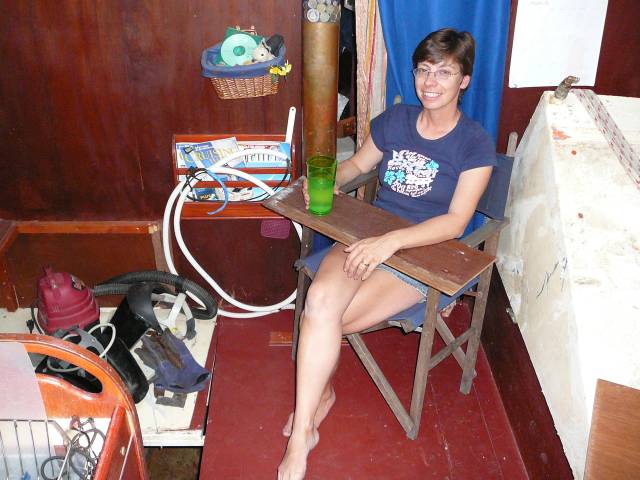
Eating dinner in style!
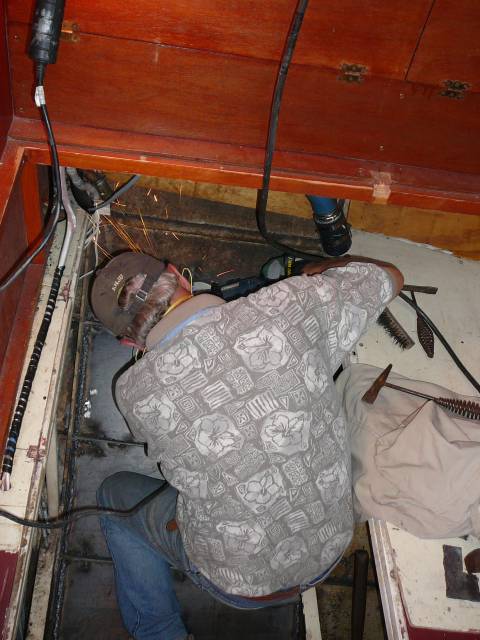
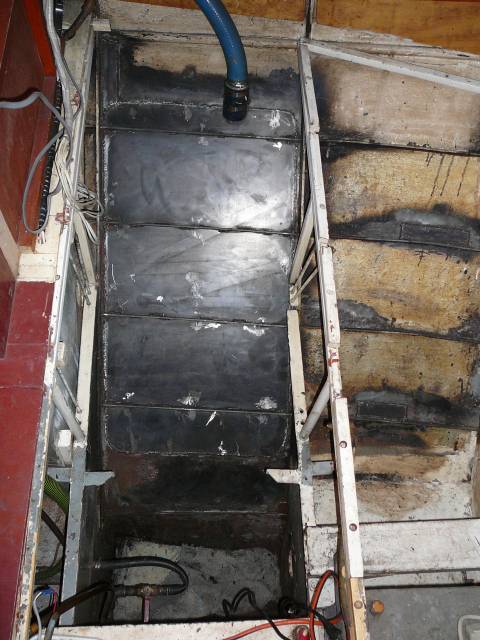

Grinding the weld, ready to paint the patch..................................................after two coats of epoxy primer.
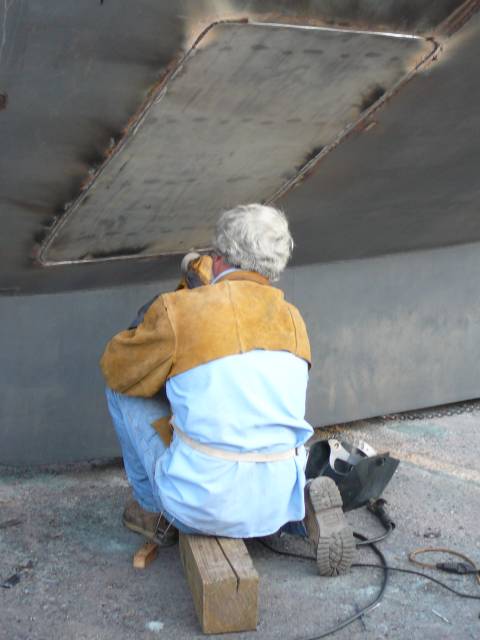
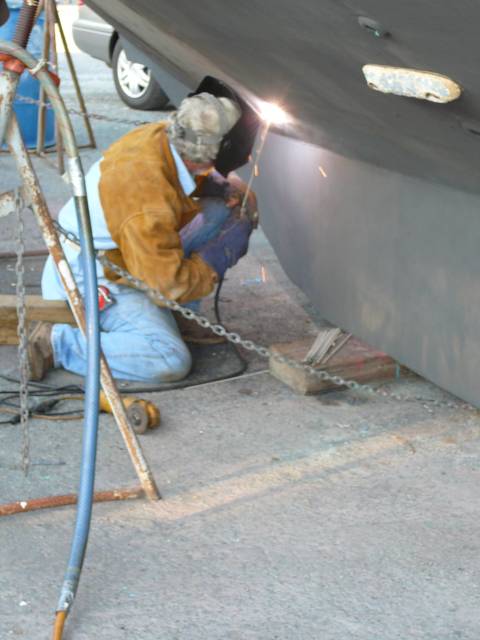
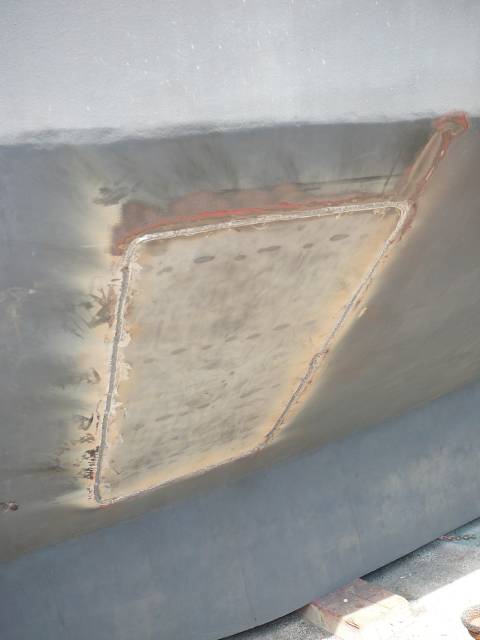
Grinding a "V" and finishing the exterior welding.

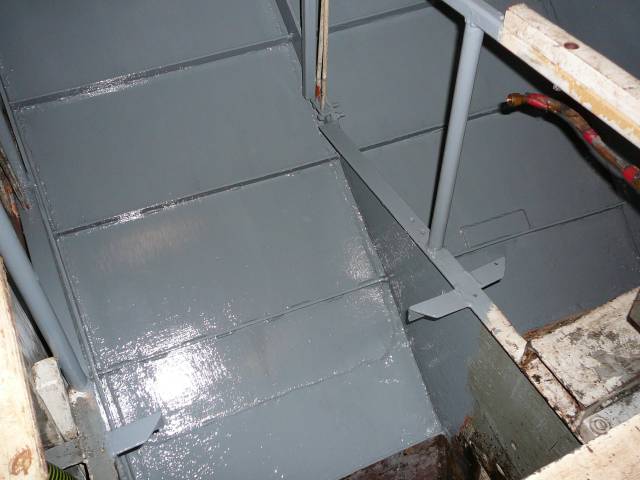
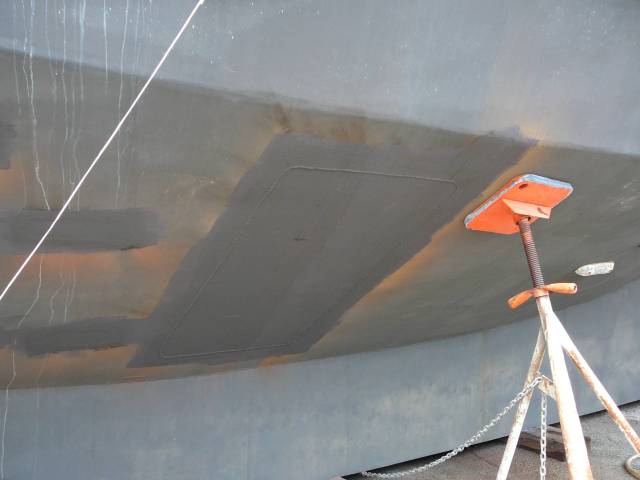
Applying epoxy. Finished inside and out.